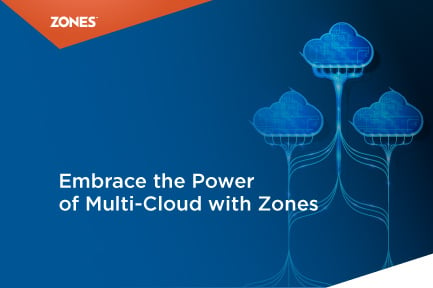Navigating Regulatory Compliance in the Cloud
Today, cloud computing has become essential to organizations since it provides flexibility, scalability, and value for money. However, with...
3 min read
![]() Zones
:
Mar 8, 2024 1:17:33 PM
Zones
:
Mar 8, 2024 1:17:33 PM

As the world leans more into the digital era, businesses are increasingly turning to cloud computing. But the big question remains: How can they maximize the value of their cloud investments? The Everest Group Key Issues Studies 2023 highlights a widespread issue among organizations. The research presents a notable finding: 67% of enterprises feel they haven't achieved the anticipated benefits from their cloud investments. This data points to a significant discrepancy in the cloud implementation strategies of numerous companies, emphasizing the intricate and subtle aspects of successfully deploying cloud technologies. This blog offers a straightforward guide on navigating the complexities of cloud value realization.
|
“67% of enterprises feel they haven't achieved the anticipated benefits from their cloud investments.” |

Abhishek Singh, Partner at Everest Group |
At the recent Zones CIO Summit, a narrative about the key value expectations in enterprise cloud adoption unfolded. It's a story of organizations embarking on a journey filled with complex and varied expectations, each shaping their path and defining success in the cloud. These intricate expectations form the essential blueprint guiding what enterprises aim to achieve through their cloud initiatives, emphasizing the need for a strategic and thoughtfully planned approach to cloud adoption.
-Source: Everest Group
In the typical enterprise journey toward cloud adoption, the end-state expectations are both ambitious and strategic. Enterprises envision a future where their cloud infrastructure and services are operational and intricately aligned with their long-term business objectives. This vision includes a cloud ecosystem that integrates seamlessly with and actively drives the company’s overarching goals, fostering growth and innovation. The end-state is not merely about having cloud technology in place; it's about realizing a state where cloud capabilities become a core component of the business strategy, enabling agility, scalability, and a competitive edge in the marketplace.
-Source: Everest Group
Mastering cloud economics and governance through FinOps strategies is pivotal in cloud adoption. Companies expect significant economic benefits from cloud investments, including cost savings and enhanced resource optimization. However, cloud FinOps goes beyond mere cost-efficiency; it emphasizes the strategic management of cloud spending and resources. This approach involves establishing comprehensive governance models that provide clear frameworks for effective financial management, risk mitigation, and policy enforcement. By integrating FinOps principles, businesses can ensure that their cloud resources are utilized efficiently and aligned with their financial objectives and accountability standards, thus maximizing the value of their cloud investments.
-Source: Everest Group
Another vital expectation revolves around talent and innovation. Enterprises are increasingly looking to leverage the cloud as a catalyst for innovation. This entails developing a roadmap that utilizes current talent effectively and fosters new skills and capabilities in the workforce, making them adept at leveraging cloud technologies for innovative solutions.
-Source: Everest Group
In the diverse IT landscape, the orchestration of hybrid environments is a common expectation. Enterprises often operate in a mix of on-premises, public, and private cloud environments. They expect their cloud journey to include seamless integration and management of these varied environments, ensuring operational efficiency, data consistency, and agility.
-Source: Everest Group
Lastly, integration and user experience play a crucial role. Enterprises expect their cloud solutions to integrate smoothly with existing systems and workflows. This integration is key to avoiding disruptions and maximizing the utility of cloud investments. Equally important is the user experience - businesses expect cloud adoption to lead to intuitive, user-friendly interfaces and interactions, enhancing productivity and user satisfaction.
-Source: Everest Group
Industry leaders highlight that realizing cloud value often involves overcoming challenges like strategic misalignment and unexpected costs. After facing initial setbacks, a U.S. manufacturing CIO emphasized the importance of aligning cloud initiatives with business goals. Similarly, a multinational life sciences CEO highlighted the complexities of managing costs and compliance (Source: Everest Group). These experiences underline the need for comprehensive planning and budgeting from the outset. Effective cloud adoption requires understanding the technical aspects and aligning them closely with business objectives, ensuring a strategic and value-driven approach. This collective wisdom stresses the importance of strategic foresight in cloud adoption journeys.
In cloud adoption, different corporate leaders have distinct focal areas reflecting their unique roles and responsibilities.
This diversity in focus underscores the multifaceted nature of cloud adoption and its varying impacts across an organization.
-Source: Everest Group
Click here to learn about Zones' Cloud and Data Center Solutions.

Today, cloud computing has become essential to organizations since it provides flexibility, scalability, and value for money. However, with...

In an era dominated by digital transformation, many organizations are employing a multi-cloud strategy. This approach involves leveraging multiple...

As the digital world evolves, more and more enterprises are adopting multicloud strategies to be faster, save money, and optimize their technology....